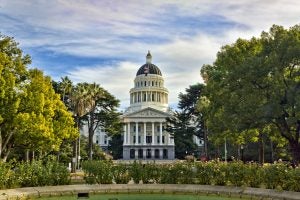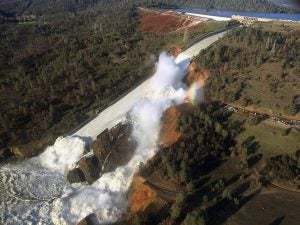Sarah Woolf, a member of a Fresno County farm family, is standing on the edge of a field that most recently grew hemp; garlic, tomatoes and onions before that; and cotton years ago. On one side is the dry Arroyo Pasajero Creek, bushes, and a wild, scraggly tree that looks like something from a Dr. Seuss book. On the other side in the far distance is the small farming town of Huron.
This former hemp field has been regraded to recharge groundwater from the creek during the next big storm in order to provide both water supply and flood control benefits. It’s an example of the kind of project that could be funded by the state’s new Multibenefit Land Repurposing Program, which launched this year with an initial $50 million. The program was created to help ease the transition for farmers to sustainable groundwater management while creating new benefits on previously irrigated land.
My colleagues and I recently visited the Arroyo Pasajero Creek and talked with Woolf and later Huron Mayor Rey León about the project and current drought. In addition to conserving water, here are three additional benefits of this land repurposing project — and one envisioned for the future — that they highlighted.











